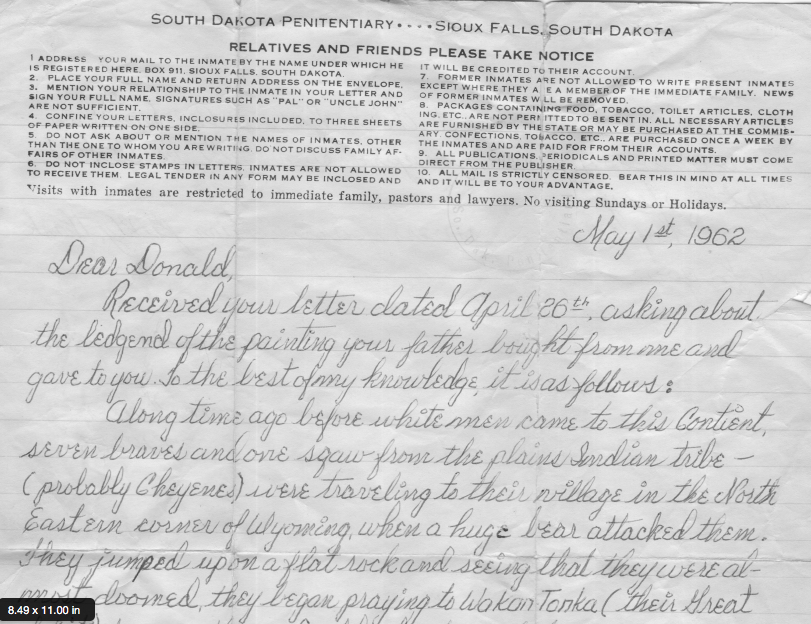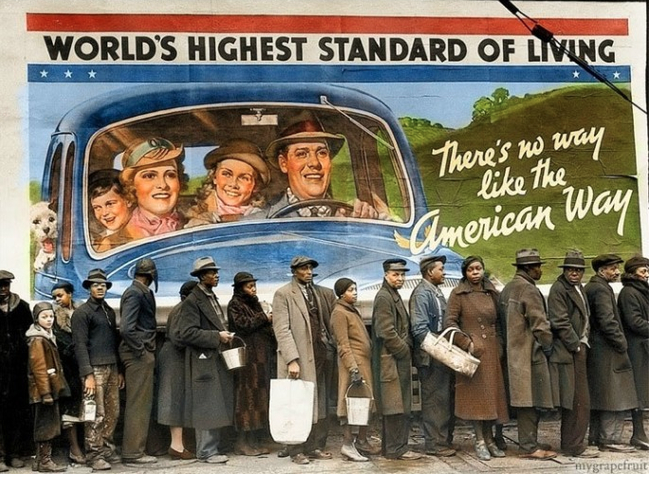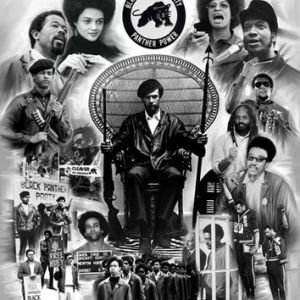I began writing about community cultural development when I was quite young, in support of the actual community organizing I was doing at the time. My big sister recently unearthed a few of the “Expressions” columns I wrote for my hometown’s weekly University-student newspaper, Volante (“The Oldest College Newspaper in the Dakotas”).
Here’s a piece they published in their November 13, 1973 edition (v. XCI, 10). I was 20 at the time; please forgive my youthful errors (I was working to stretch the cultural lexicon of our day, still struggling to excise sexism from our language & racism from our worldview — an ongoing project):
We are in the midst of an important phase of our country’s cultural development. After a century in which the Indian culture has been slowly strangled by the imposition of the white society, there is emerging a quiet but powerful resurgence of cultural activity by native Americans. For the first time in many native Americans’ lives, there is pride rather than shame in the culture of a people who lived and thrived in this country for centuries before the advant of a dominant white society.
Last week’s Native American Days, coordinated by [the University of South Dakota]’s Tiyospaye Council with the assistance of the National Endowment for the Arts, brought to the USD campus striking evidence of the results of this cultural reawakening among native Americans. The activities of this three-day event gave witness to the beginnings of the Indian culture’s restoration to its proper place in the American cultural scene.
Smong the artists who were on the USD campus as part of Native American Days was Paul WarCloud, full-blooded Sisseton-Wahpeton Dakotah from Sisseton, SD. WarCloud is a man who is totally committed to his art and to this reanaissance in native American culture. Along with six other artists from Sisseton — Tino Walking Bull, Roman Derby, Joann Bird, Raymond Arrow, Douglas Yellowback, and Calvin Frennel — WarCloud has been actively involved in the establishment of a gallery for Indian artists in the Pohlen Center in Sisseton. The center is named for Father John Pohlen, a German priest who lived and worked with the Indian people in the Sisseton area for 35 years until his death in 1970. It was Pohlen’s dream to found a center in Sisseton for the encouragement of Indian artists and craftsmen. This dream became a reality in 1970, with the purchase of the old library building in Sisseton. Assited by Father Leonard Baldus, the Sisseton artists began to prepare the building to become the Pohlen Indian Cultural Center.
Supported primarily by donations and two grants from the South Dakota Arts Council. the Pohlen Center has grown to be much more thatn a gallery for Indian artists. In the basement of the building is a trading post managed by Carolyn Renville of Seven Fires Enterrpises. The crafts which are for sale in this shop (some of which were displayed by Mrs. Renville at Native American Days) are produced by Indian craftsmen from the area. Classes in beadwork are held there as well, insuring that this art will be passed on to the younger generation of Indian artisans. A similar program is carried on upstairs in the building, where WarCloud and John Derby have studio space in addition to the display area.Young people frequent the studio to watch the artists at work and to learn from themtechnical aspects of their work — and their spcial pride in being part of a revitalized Indian culture.
This emphasis on passing on to the younger generation of native Americans a sense of pride in their culture is deeply felt by Paul WarCloud and others like him. He recalls the early days of his own career as an artist, when he noticed the rapid decline of his proud Sioux heritage. WarCloud had drawn throughout his teens and had planned to enter the Santa Fe Indian Art School, but his plans were interrupted by the Korean War. Upon his discharge form the military in 1958, he began pursuing his postponed goal with an even greater sense orf urgency. Never having had any formal instruction in painting, WarCloud set out to teach himself, developing a realistic style which is all his own.
In reflecting upon the precarious position from which the Indian culture is emerging, WarCloud points out the reason for its near-death. “The TV and radios blared out about the Indian as a savage, attacking wagon trains and the like,” WarCloud says. “But now the young people are realizing the contributions we have made to society.” He notes with pride the changes which have taken place among young native Americans in recent years, from a concern with hiding their Indian-ness to taking pride in it. “The young people used to dye their hair and use make-up, but now they wear the beads and learn the dances… They can say ‘I am Indian’ with their heads held high.”
WarCloud’s own feelings of pride in his Sioux heritage are brilliantly reflected in his painting. “Before I paint, I always pray to the Great Spirit,” he explains. “Sometimes I will not paint for days, because that power is not there. But then I will get an idea, and it is easy for me to finish. … I’m only an instrument for what that power tells me to paint.” The power WarCloud feels is shared by anyone who sees his work. Beneath the detail of WarCloud’s realistic style is a wealth of feeling that arrests the attention of all viewers; anyone who saw the two dozen paintings here last week would agree. [WarCloud’s exhibition was still on view at the time of this publication.]
WarCloud’s devotion to his art is matched by his and his wife Marcella’s other activities in preserving the Indian culture. He has already published two dictionaries of the three Sioux dialects and is in the process of completing a sourcebook on other aspects of the Indian culture.
Speaking to Paul WarCloud exposes a confident optimism and faith in his work that lie behind the enormous success he has achieved. in 1971, thirteen years after he began to paint, he was commisioned by [Gov. Richard Kneip] to paint a mural which now hangs in the governor’s office. Hanging now beside an older mural depicting the white man advancing across the plains, “Unity Through the Great Spirit” celebrates the coexistence and cooperation between the white and Indian cultures. A more eloquent testimony to the changes which are occurring now could not be found.
On Thursday night, ten Indian high school students from all over South Dakota presented a dance program in the [Student Union] Commons. These students were selected earlier in the fall to participate in an Indian dance workshop program under the direction of Feral Deer Skye with the assistance of the South Dakota Arts Council. Mrs. Skye, originally from Wisconsin, has worked with these students to further improve their skills in traditional native American dance. She speaks with great modesty about her own role in the workshop program. It is the desire and interest of the young people involved, she contends, which explains the program’s success. The depth of their involvement in learning and performing these traditional dances was certainly impressive.
And this depth of interest is not restricted to just these ten students. The Wacipi (a traditional Indian dance contest) which was held Saturday in the Coyote Student Center brought native Americans from all across the northern plains states. The participants represented a number of different tribes and ranged in age from pre-school children to senior citizens. The whole event was an impressive one, drawing an unprecedently large sand varied crowd of spectators — USD students, community people, visitors from other communities, both Indian and non-Indian. For many, it was a first exposure to Indian dance. For those who had attended before, it reflected the increasing interest and activity in this important element of the Indian culture. For all, it was a very exciting experience.
The Wacipi, the exhibitions of arts and crafts, the idea presented by those who spoke of the renewed activity in native culture — all these aspects of Native American Days reflect a vital, living cultural experience. The objects produced by Indian artists and craftsmen are not just empty imitations of those made generations ago. Nor do the dancers of today thoughtlessly mimic motions whose meaning was lost with their original performers. To those who attended Native American Days, it was obvious that the spirit of the native American culture burns as brightly now as ever.
 I recently moved this picture to a place where I see it each morning, upon awakening, and each night before going to sleep.
I recently moved this picture to a place where I see it each morning, upon awakening, and each night before going to sleep.






